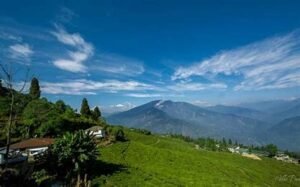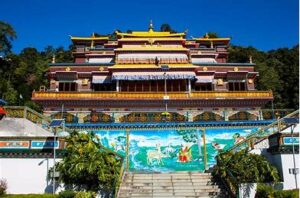Bihu is one of the most significant and most enthusiastically celebrated festivals in Assam,
India. It marks the seasonal change and is a time of thanksgiving, joy, and togetherness. There are three types of Bihu – Rongali Bihu, Bhogali Bihu, and Kongali Bihu – each
corresponding to different stages of the agricultural cycle. All three Bihu festivals involve dance, music, feasting, and cultural traditions that have been passed down through generations.
The Importance of Bihu in Assamese Culture
Bihu is an emotion and the heartbeat of Assamese culture. The festival signifies the agricultural life cycle and honours the hard work of the farmers. It marks the arrival of different seasons and is deeply rooted in the lives of the people of Assam. Every Bihu celebration is tied to a season – the sowing, growing, and harvesting of crops – making it a time of gratitude and celebration.
The Assamese people celebrate Bihu with traditional dance, music, and feasting. The entire
community comes together during these celebrations, which are filled with joy and a deep sense of cultural pride. The festive atmosphere brings people closer, creating a sense of unity and harmony in the region.
The Three Types of Bihu Festivals
Bihu is celebrated three times a year, each one marking a different phase in the farming
calendar. These are Rongali Bihu, Bhogali Bihu, and Kongali Bihu.
1. Rongali Bihu (Bihu of the Spring)
Rongali Bihu is the most widely celebrated Bihu festival, taking place in April. It is also called the Bihu of the Spring and marks the beginning of the Assamese New Year. This festival is associated with the sowing season. It symbolizes the arrival of spring and the beginning of the agricultural cycle.
The celebration of Rongali Bihu lasts for several days, typically from April 13 to 15. It involves various cultural activities, such as traditional Bihu dance (known as Bihu Naas), where people, especially the youth, perform vibrant dances wearing colorful traditional attire. The dances are accompanied by the beat of the dhol, bahi, and toka, which are traditional musical instruments.
The rhythm of the dhol and the energetic dance create an atmosphere of fun and excitement. Food plays a central role in Rongali Bihu celebrations. Families prepare special dishes such as pitha (sweet rice cakes), larus (sweet balls made of sesame seeds and jaggery), and masor tenga (a tangy fish curry). The dishes are enjoyed by families and shared with friends and neighbors, fostering a sense of community.
2. Bhogali Bihu (Bihu of Feasts)
Bhogali Bihu is also known as Magh Bihu. It is typically celebrated in January. It marks the end of the harvest season and is a time for feasting and thanksgiving. The festival is dedicated to Lord Vishnu and symbolizes the bountiful harvests that are ready to be gathered.
The central event of Bhogali Bihu is the Meji (a bonfire), which is constructed from hay, wood, and other agricultural materials. The Meji is set ablaze, and people gather around it to offer prayers, celebrate, and enjoy the warmth of the fire. The bonfire signifies the end of the harvest season and the beginning of a new agricultural cycle. People celebrate with dance, music, and a variety of traditional foods.
Bhogali Bihu is a time of grand feasts, and Assamese families prepare special dishes, such as pithas, larus, fish, and meat. The feasts are often enjoyed with friends, relatives, and neighbors, and the festival is an opportunity to express gratitude for the abundance of the harvest.
3. Kongali Bihu (Bihu of the Autumn)
Kongali Bihu is the third and final Bihu festival, and it is celebrated in October or November. Unlike the other two Bihu festivals, Kongali Bihu is marked by a more somber tone and is associated with the time when the granaries are almost empty. The festival reflects a time of scarcity and is a way of honoring the hard work of the farmers who are preparing for the next sowing season.
During Kongali Bihu, people pray to the gods for a good harvest in the coming season. It is a more reserved celebration, focused on rituals and offering thanks to nature for its bounty. While the festivities are not as elaborate as in Rongali and Bhogali Bihu, Kongali Bihu is still significant, and people often visit the temples to offer prayers for prosperity.
Cultural Practices and Traditions During Bihu
Bihu celebrations are filled with cultural practices that reflect the rich heritage of Assam. These include:
1. Traditional Dance and Music: The most iconic feature of Bihu is the traditional Bihu dance. Performed by both men and women, the dance is lively and energetic, reflecting the joyous nature of the festival. The dancers form circles and perform graceful yet
rhythmic movements to the beat of traditional instruments like the dhol (drum), bahi (flute), and toka (a type of cymbal). The songs sung during Bihu are also significant, with lyrics that praise nature, love, and the beauty of Assamese life.
2. Traditional Attire: People dress in traditional Assamese attire during Bihu celebrations. Women wear the mekhela chador, a traditional Assamese dress made of silk or cotton, while men wear dhoti and gamosa (a traditional towel). The attire reflects the cultural identity of the people of Assam.
3. Feasting: Food is an integral part of Bihu celebrations. Traditional Assamese dishes like pithas (rice cakes), larus (sweet balls), fish curry, and khar (a dish made of raw papaya and pulses) are prepared in abundance during the festival. Sharing food with
family and friends fosters a sense of community and togetherness.4. Bihu Songs: Bihu songs, known as Bihu Geet, are an essential part of the festival.
These songs, typically sung in the Assamese language. They are a mix of joyful tunes and folk songs that narrate stories of love, nature, and life in rural Assam. These songs are performed at home, during the Bihu dances, and at community events.
5. Social Harmony: Bihu is a festival that goes beyond religious and social boundaries. People from all walks of life, regardless of their background, come together to celebrate the festival. The spirit of unity and togetherness is central to Bihu. It makes it an
important social occasion in Assam.
Bihu in Modern Times
In contemporary times, Bihu has become a symbol of Assamese identity. It is not only celebrated in Assam but also among Assamese communities around the world. The festival has adapted to modern times, with Bihu fairs, cultural performances, and even Bihu celebrations taking place in cities outside Assam. However, the essence of the festival remains the same – to celebrate nature, agriculture, and the rich cultural heritage of Assam.
Conclusion
Bihu is a celebration of life, nature, and community. With its three unique phases – Rongali, Bhogali, and Kongali – Bihu offers a glimpse into the agricultural lifestyle of Assam and its deep cultural roots. From traditional dances and music to traditional feasts and rituals, Bihu continues to be a symbol of joy. It is an essence of the shared unity and cultural pride. Whether you are in Assam or part of the Assamese diaspora, Bihu remains an important festival that brings people together to celebrate their rich heritage and shared history.




